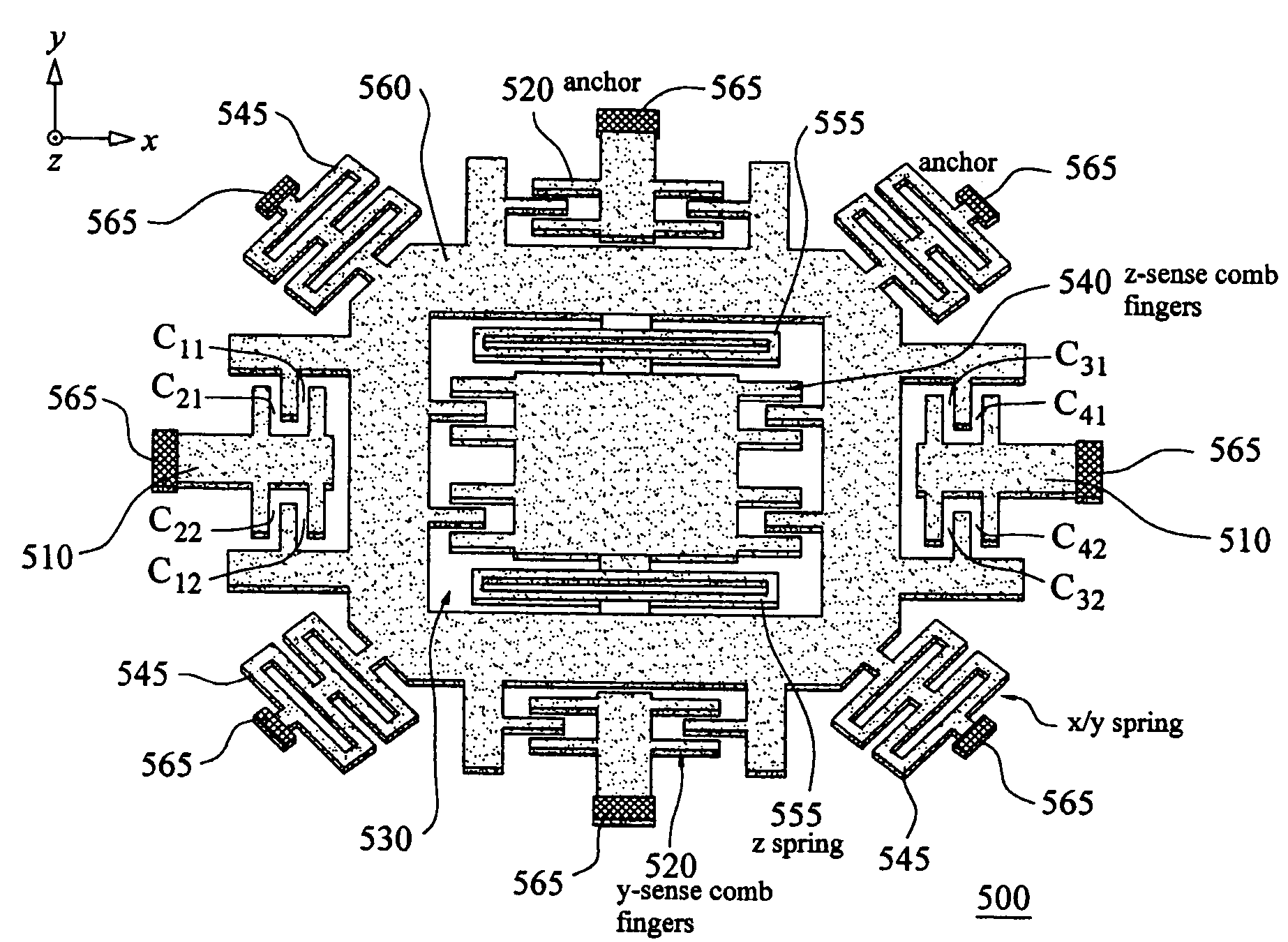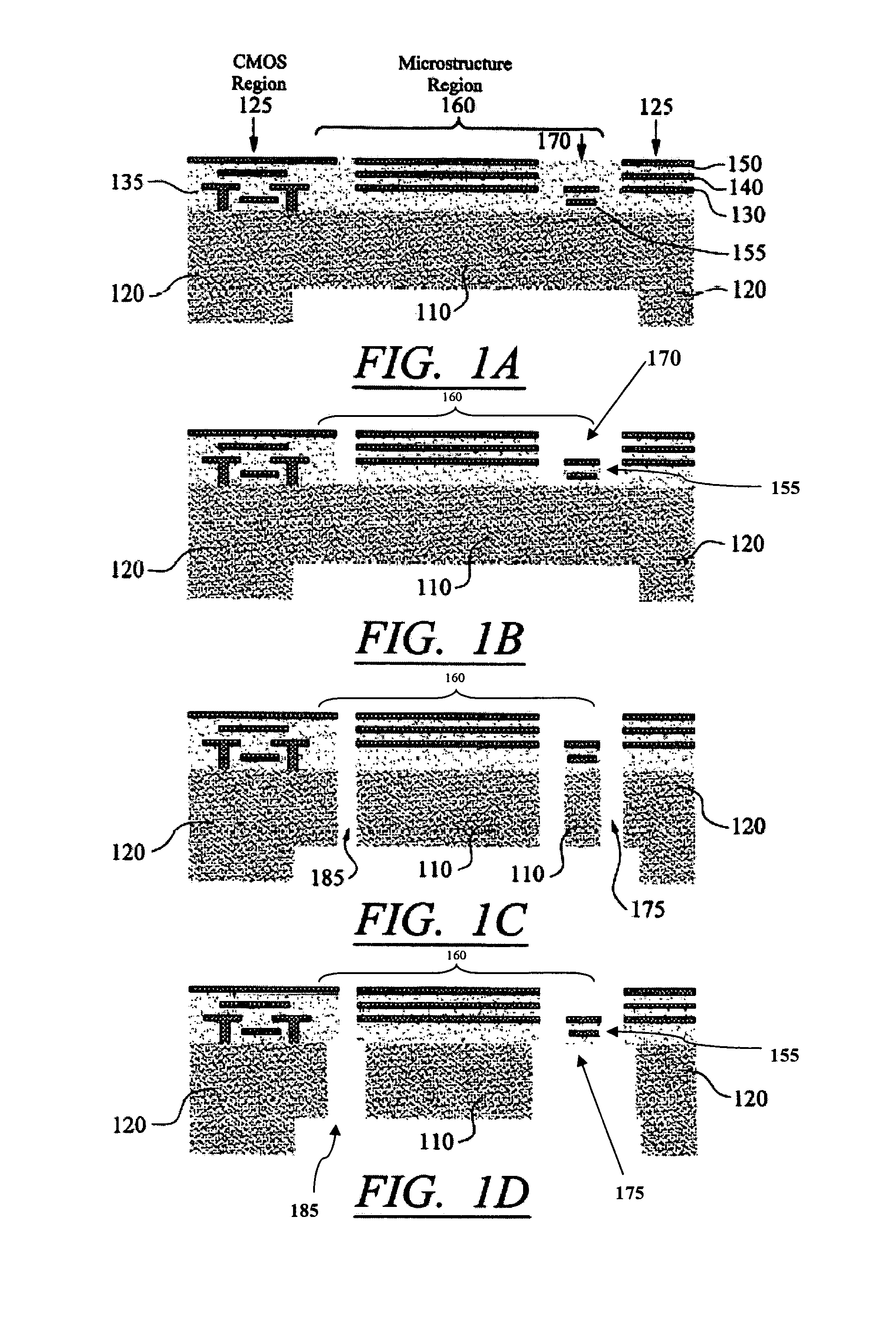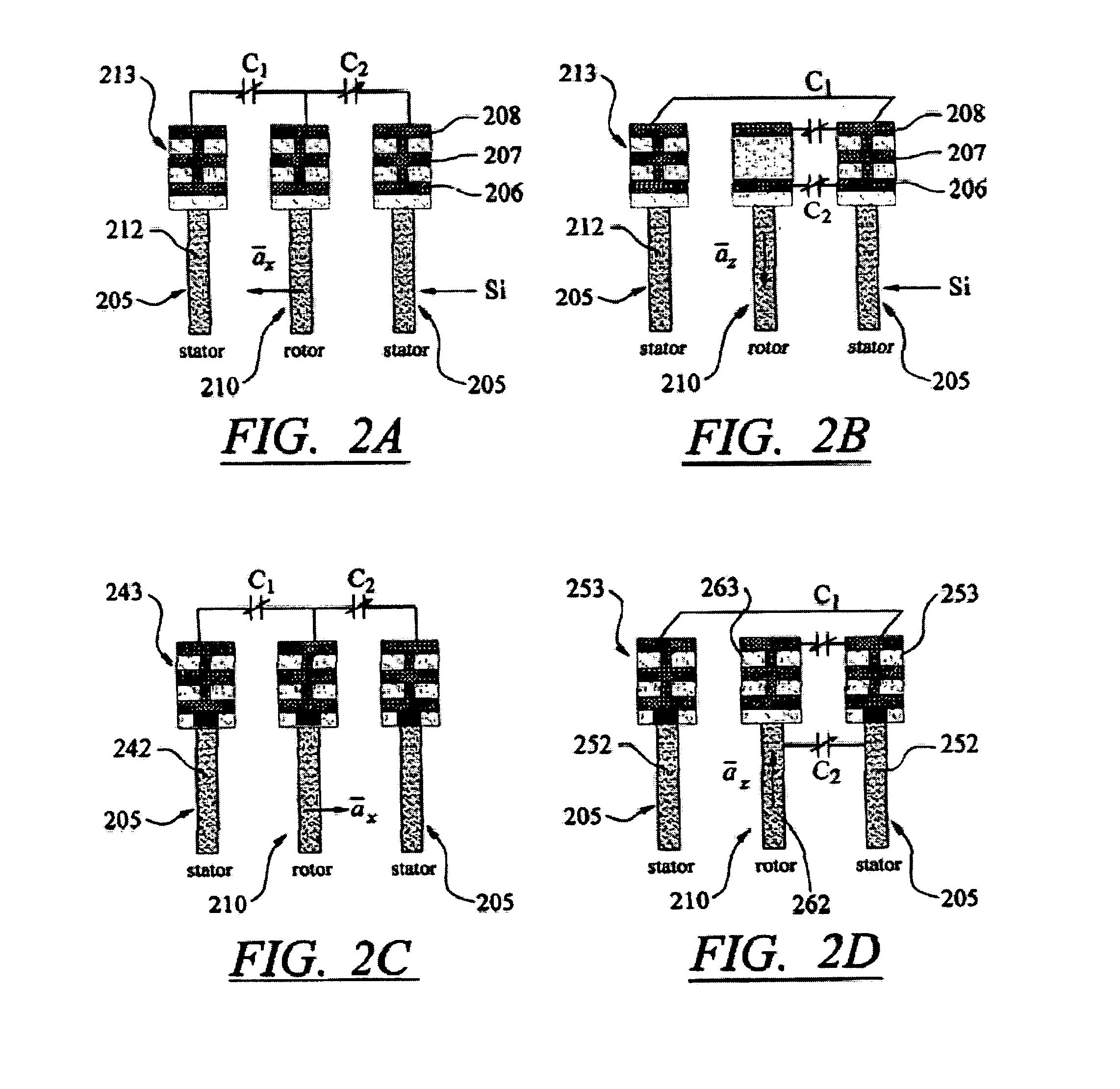Integrated monolithic tri-axial micromachined accelerometer
a micromachined accelerometer and integrated technology, applied in the field of sensors, can solve the problems of limiting the design flexibility of electrostatic actuators and capacitive sensors, affecting the performance of capacitive sensor designs, and affecting the safety of integrated circuits
- Summary
- Abstract
- Description
- Claims
- Application Information
AI Technical Summary
Benefits of technology
Problems solved by technology
Method used
Image
Examples
example 1
Example 1
Structural Simulation
[0069]A structural simulation of a monolithic integrated three axis accelerometer according to an embodiment of the invention was performed using Nodal Design of Actuators and Sensors (NODAS) software. NODAS is a hierarchical cell library for behavioral modeling and nodal simulation of MEMS, was used [Q. Jing and G. K. Fedder, “A hierarchical circuit-level design methodology for microelectromechanical systems,” IEEE Transactions on Circuits and Systems II, Vol. 46 (1999), pp. 1309-1315]. NODAS consists of symbols and models of elements commonly found in suspended MEMS designs, such as anchors, beams, plates and gaps. As shown in FIGS. 2(A) and 2(B), the cross-section of the DRIE beams is not rectangular. A DRIE beam has a wider CMOS layer on top of the silicon layer. This irregular cross section has been considered and adopted in the DRIE beam model in the NODAS library.
[0070]FIG. 6(A) shows the NODAS model for an x-y accelerometer which includes x / y sp...
example 2
Example 2
Fabrication Results
[0073]A released exemplary monolithic integrated three axis accelerometer 700 according to an embodiment of the invention is shown in FIG. 7(A) comprising x-sensing accelerometer 710, y-axis accelerometer 720 and z-axis accelerometer 730, all disposed on the same chip. The x-axis accelerometer 710 y-axis accelerometer 720 are identical and orthogonally oriented, while the z-accelerometer 730 is embedded in the center of accelerometer 700. The entire microstructure shown is about 1 mm by 1 mm in size. The SCS membrane layer was about 60 μm thick. Silicon underneath the z-spring beams 740 was completely undercut to maximize the z-compliance. Silicon underneath the x / y-spring beams 750 was just partially undercut to maintain the flatness of the whole structure. The silicon undercut on the comb fingers with small gaps was significantly reduced because of the known microloading effect.
[0074]FIG. 7(B) shows a micrograph of an x / y spring 750, while FIG. 7(C) sho...
PUM
 Login to View More
Login to View More Abstract
Description
Claims
Application Information
 Login to View More
Login to View More - R&D
- Intellectual Property
- Life Sciences
- Materials
- Tech Scout
- Unparalleled Data Quality
- Higher Quality Content
- 60% Fewer Hallucinations
Browse by: Latest US Patents, China's latest patents, Technical Efficacy Thesaurus, Application Domain, Technology Topic, Popular Technical Reports.
© 2025 PatSnap. All rights reserved.Legal|Privacy policy|Modern Slavery Act Transparency Statement|Sitemap|About US| Contact US: help@patsnap.com



